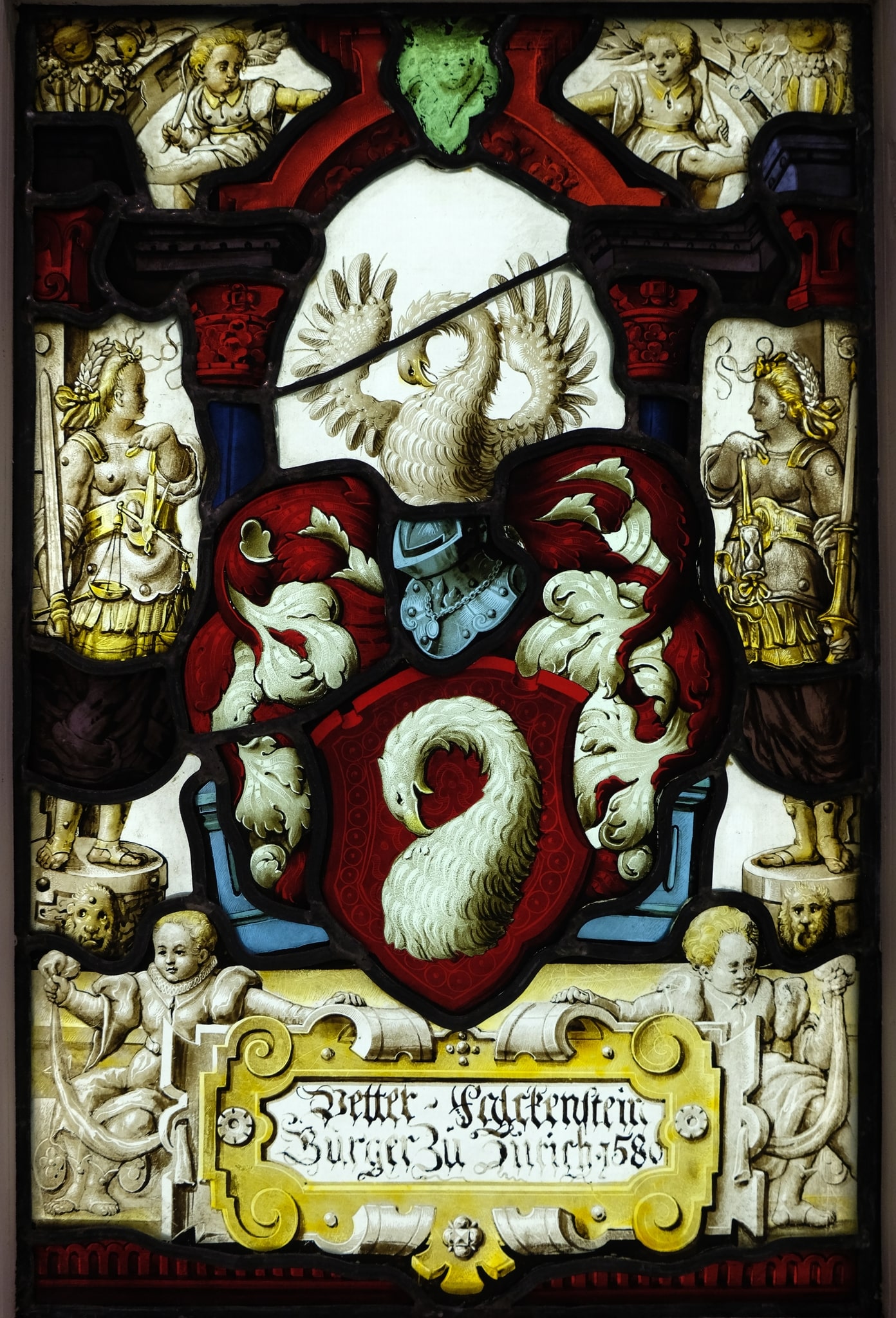The window is remarkably subtle in its delineation of the figure, seeming more related to Netherlandish traditions than most Swiss glass painting of the time. The personifications are Romanized, depicting powerful females in classical armor. Their forms, and that of the putti above and those holding the inscription plate achieve a highly plastic, three-dimensionality, actually taking up believable space. Such innovation resonates with the styles transformed in the Lowlands by painters who had travelled to Rome in the first half of the sixteenth century. The application of paint in similarly sophisticated. Art historians have suggested that some of the comparative material, cited below, is associated with the Murer family, consisting of Jos with sons Josias and Christoph, influential glass painters in Zurich from the 1540’s through 1630. There are some similarities in the format and especially the handling of the painting in the mantling, helm, and heraldic animal in the crest, with the Arms of Kaspar Krieg of Zurich. The panel, now in Reding-Haus, Schwyz, however, is heavily restored, including the inscription plate which carries a date of 1572 (SZ_15). A drawing now in the Wyss collection of stained glass drawings, dated 1590–1600, shows a blank shield set in a similar architectural frame with personification of Justice and Prudence standing on pedestals of the same shape (Wyss Collection, Inv. 20036.173; Hasler, 1996/97, no. 593, p. 207).
The pelican in the arms is seen as “vulning” itself, biting at her breast. Medieval bestiaries explained that the pelican would feed its young with its blood, and drew a parallel with Christ’s offering of his blood on the cross. Thomas Aquinas’ hymn Adoro te devote, 1264, celebrated Christ in the Sacrament of the Eucharist with the words: Pie pellicane, Iesu Domine, me immundum munda tuo sanguine (Deign, O Jesus, Pelican of heaven, me, a sinner, in Thy Blood to lave). The Arms of the district of Solothurn, dated 1579, includes the Pelican emblem of the Falkenstein family at the top (Bernisches Historisches Museum; BE_1495). Justice is represented by her traditional emblems of sword and scales. The virtue on the right holds an hour glass, an attribute of Temperance, as depicted a Netherlandish engraving issued about 1550 by Cornelis Massijs (from a series of nine plates of the Virtues; British Museum E,1.287).
Cited in:
Record of the Art Museum, 1963, p. 19.
Raguin, & Morgan, 1987, p. 82.
Hasler, 1996/97, p. 206.
